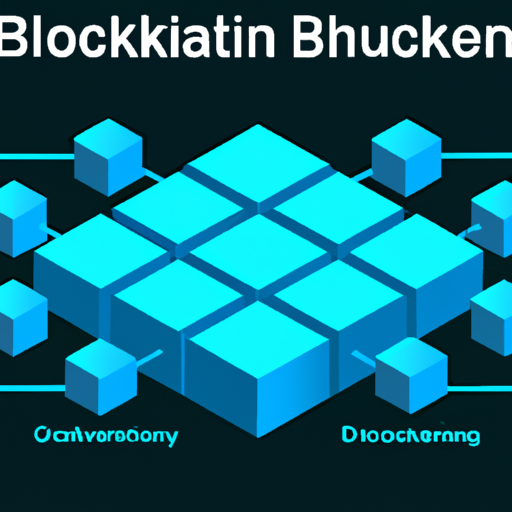-
Table of Contents
- Introduction
- Analyzing the Use Cases for Public and Private Blockchains
- Investigating the Cost of Running a Public and Private Blockchain
- Examining the Scalability of Public and Private Blockchains
- Comparing the Security of Public and Private Blockchains
- Exploring the Pros and Cons of Public and Private Blockchains
- Conclusion
“Unlock the Potential of Public and Private Blockchains: Discover the Difference!”
Introduction
Blockchain technology has revolutionized the way we store and transfer data. It has enabled us to create secure, immutable, and transparent digital ledgers that can be used to store and transfer data in a secure and efficient manner. One of the most important aspects of blockchain technology is the ability to create both public and private blockchains. While both types of blockchains offer similar benefits, there are some key differences between them that should be understood. This article will discuss the differences between public and private blockchains, and how they can be used in different scenarios.
Analyzing the Use Cases for Public and Private Blockchains
Blockchain technology has been gaining traction in recent years, with both public and private blockchains being used for a variety of applications. Public blockchains are open to anyone, while private blockchains are restricted to a certain group of users. Each type of blockchain has its own set of use cases, and understanding the differences between them is essential for determining which type of blockchain is best suited for a particular application.
Public blockchains are decentralized networks that are open to anyone, allowing users to join and participate in the network without needing permission from any central authority. This makes them ideal for applications that require a high degree of trust and transparency, such as cryptocurrency transactions. Public blockchains are also well-suited for applications that require a large number of users, such as decentralized applications (dApps).
Private blockchains, on the other hand, are restricted to a certain group of users. This makes them ideal for applications that require a high degree of privacy and security, such as enterprise applications. Private blockchains are also well-suited for applications that require a high degree of control, such as supply chain management.
In conclusion, public and private blockchains each have their own set of use cases. Public blockchains are well-suited for applications that require a high degree of trust and transparency, while private blockchains are ideal for applications that require a high degree of privacy and security. Understanding the differences between the two types of blockchains is essential for determining which type of blockchain is best suited for a particular application.
Investigating the Cost of Running a Public and Private Blockchain
Blockchain technology has revolutionized the way data is stored and shared, providing a secure and transparent platform for digital transactions. As the technology continues to evolve, the cost of running a public and private blockchain has become an important consideration for businesses and organizations.
Public blockchains are open to anyone, allowing anyone to join the network and participate in the consensus process. This makes them ideal for applications that require a high degree of trust and transparency, such as cryptocurrency transactions. However, the cost of running a public blockchain can be high due to the need for powerful hardware and software, as well as the cost of maintaining the network.
Private blockchains, on the other hand, are closed networks that are managed by a single entity. This allows for greater control over the network, as well as the ability to customize the rules and protocols. The cost of running a private blockchain is typically lower than that of a public blockchain, as the hardware and software requirements are less demanding. Additionally, the cost of maintaining the network is typically lower, as the network is managed by a single entity.
The cost of running a public or private blockchain will depend on a variety of factors, such as the size of the network, the type of consensus mechanism used, and the number of nodes in the network. Additionally, the cost of running a blockchain will also depend on the type of hardware and software used, as well as the cost of maintaining the network.
In conclusion, the cost of running a public or private blockchain will depend on a variety of factors, including the size of the network, the type of consensus mechanism used, and the number of nodes in the network. Additionally, the cost of running a blockchain will also depend on the type of hardware and software used, as well as the cost of maintaining the network.
Examining the Scalability of Public and Private Blockchains__WPAICG_IMAGE__
The scalability of public and private blockchains is an important consideration for businesses and organizations looking to leverage the technology for their operations. As the blockchain technology continues to evolve, it is important to understand the differences between public and private blockchains and how they can affect scalability.
Public blockchains are open to anyone and are decentralized, meaning that no single entity controls the network. This allows for a high degree of scalability, as the network can grow to accommodate more users and transactions. However, public blockchains are also more vulnerable to malicious actors, as anyone can join the network and potentially disrupt it.
Private blockchains, on the other hand, are permissioned networks that are managed by a single entity or a consortium of entities. This allows for greater control over the network, as the entity or consortium can decide who can join the network and what types of transactions can be conducted. Private blockchains are also more secure than public blockchains, as malicious actors are less likely to be able to gain access to the network.
However, private blockchains are not as scalable as public blockchains. This is because the entity or consortium managing the network must approve each new user and transaction, which can slow down the network’s growth. Additionally, private blockchains are limited in terms of the number of users and transactions they can support.
Ultimately, businesses and organizations must consider the scalability of public and private blockchains when deciding which type of blockchain to use for their operations. Public blockchains offer a high degree of scalability, but are more vulnerable to malicious actors. Private blockchains offer greater control and security, but are not as scalable as public blockchains.
Comparing the Security of Public and Private Blockchains
The security of public and private blockchains is an important consideration for anyone looking to use blockchain technology. Both types of blockchains offer different levels of security, and it is important to understand the differences between them in order to make an informed decision.
Public blockchains are open to anyone, and they are secured by a network of computers that are constantly verifying transactions. This means that anyone can view the data stored on the blockchain, and they can also participate in the consensus process. This makes public blockchains more secure than private blockchains, as the data is more widely distributed and harder to tamper with.
Private blockchains, on the other hand, are closed networks that are only accessible to a select group of users. This means that the data stored on the blockchain is more secure, as it is not accessible to the public. However, private blockchains are also more vulnerable to attack, as they are not as widely distributed as public blockchains.
In terms of security, public blockchains are generally considered to be more secure than private blockchains. This is because public blockchains are more widely distributed and have a larger network of computers verifying transactions. Private blockchains, on the other hand, are more vulnerable to attack due to their smaller network and lack of public access.
Ultimately, the security of public and private blockchains depends on the specific use case. For example, if the data stored on the blockchain is sensitive, then a private blockchain may be the better option. However, if the data is not sensitive, then a public blockchain may be the better choice. It is important to consider the specific needs of the application before deciding which type of blockchain is best suited for the task.
Exploring the Pros and Cons of Public and Private Blockchains
Blockchain technology has revolutionized the way data is stored and shared, offering a secure and transparent way to store and transfer information. This technology is used in both public and private blockchains, each of which has its own advantages and disadvantages. In this article, we will explore the pros and cons of public and private blockchains.
Public blockchains are open to anyone, allowing anyone to join the network and view the data stored on it. This makes them highly transparent and secure, as the data is stored on a distributed ledger that is difficult to tamper with. Additionally, public blockchains are decentralized, meaning that no single entity controls the network. This makes them resistant to censorship and manipulation.
On the other hand, public blockchains are not as secure as private blockchains. As anyone can join the network, malicious actors can easily gain access to the data stored on the blockchain. Additionally, public blockchains are often slow and expensive to use, as the network is congested with transactions.
Private blockchains, on the other hand, are permissioned networks that are only accessible to certain users. This makes them more secure than public blockchains, as only authorized users can access the data stored on the network. Additionally, private blockchains are faster and cheaper to use, as the network is not congested with transactions.
However, private blockchains are not as transparent as public blockchains. As only certain users can access the data stored on the network, it is difficult to verify the accuracy of the data. Additionally, private blockchains are centralized, meaning that a single entity controls the network. This makes them vulnerable to censorship and manipulation.
In conclusion, both public and private blockchains have their own advantages and disadvantages. Public blockchains are open to anyone, making them highly transparent and secure. However, they are not as secure as private blockchains and are often slow and expensive to use. Private blockchains, on the other hand, are more secure and faster and cheaper to use. However, they are not as transparent as public blockchains and are vulnerable to censorship and manipulation.
Conclusion
In conclusion, public and private blockchains have many differences that make them suitable for different use cases. Public blockchains are open and permissionless, allowing anyone to join and participate in the network. Private blockchains are closed and permissioned, allowing only certain users to join and participate in the network. Public blockchains are more secure and transparent, while private blockchains are more efficient and cost-effective. Ultimately, the choice of which blockchain to use depends on the specific needs of the user.



